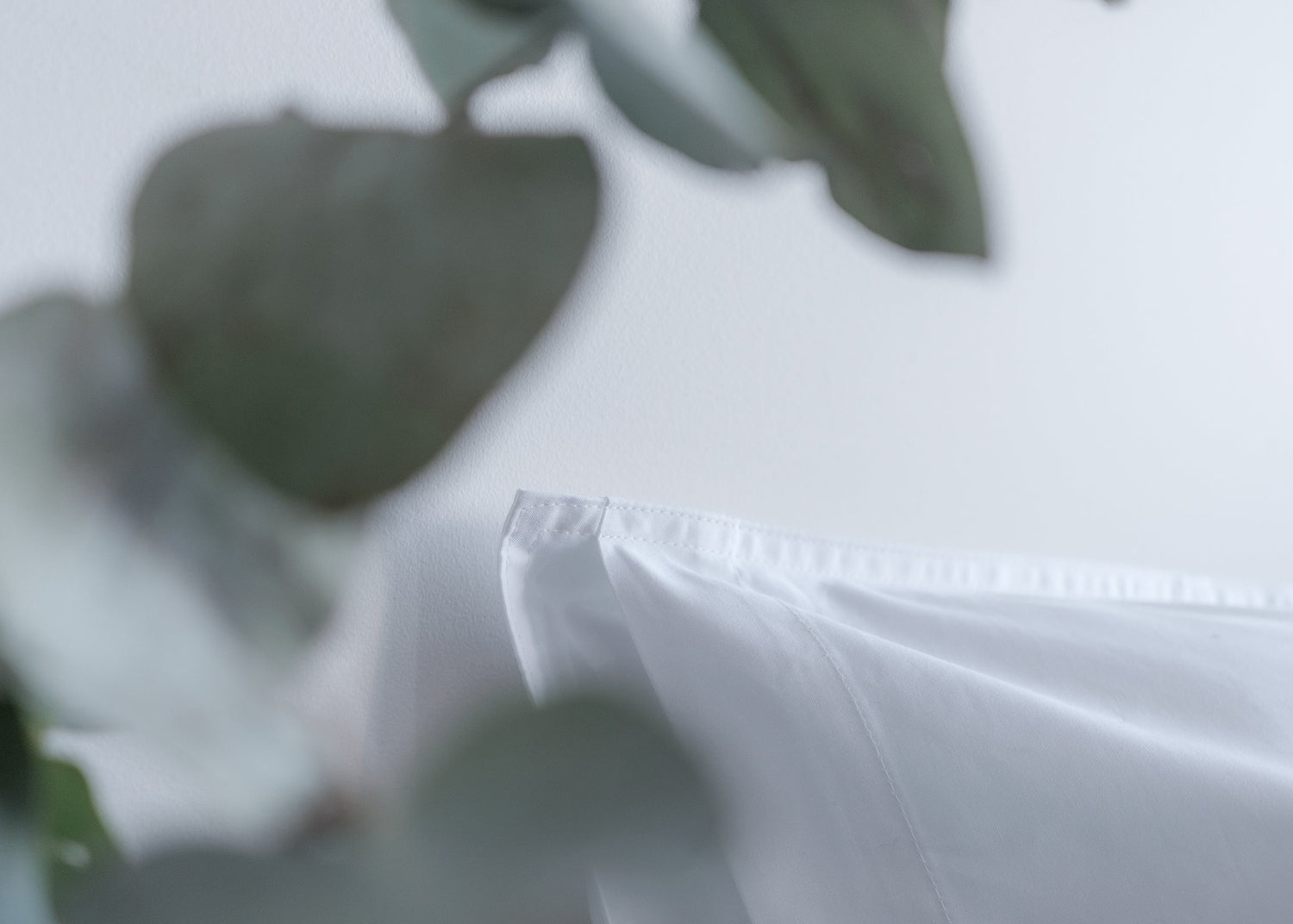
What is Flax Linen?
Share
Flax linen, a textile made from the fibres of the flax plant, has been prized for hundreds of years for its durability, comfort, and versatility - but how is it made and what are the benefits?
The use of flax linen dates back to ancient civilisations, with evidence of its use found in prehistoric Swiss lake dwellings and Egyptian tombs. The ancient Egyptians were particularly renowned for their fine linen, which was often used for mummification and as a symbol of purity and wealth.
Linen's longevity as a fabric is a testament to its enduring appeal and practicality.
The Production Process
From plant to linen, Flax production is a labour-intensive journey:
- Harvesting: Flax is harvested by pulling the entire plant from the ground to preserve the length of the fibres. This is usually done when the plant is in full bloom.
- Retting: This process involves soaking the harvested flax in water to loosen the outer stalk and separate the fibres. Retting can be done naturally using dew or in tanks with water.
- Breaking and Scutching: Once retting is complete, the dried flax is broken to remove the woody stem. Scutching follows, which involves beating the flax to remove the outer layer, leaving behind the long, soft fibres.
- Hackling: The flax fibres are then combed through fine-toothed tools to separate and align them, resulting in smooth, continuous fibres.
- Spinning and Weaving: The fibres are spun into yarn and woven into fabric. This process can be done by hand or using modern machinery, but traditional hand-spun linen is highly valued for its quality.
Top Features and Benefits
- Durability: Linen is one of the strongest natural fibres, making it highly durable. It can withstand regular wear and washing, often becoming softer and more comfortable over time.
- Breathability: Linen's natural fibres allow air to flow freely, making it highly breathable and comfortable, especially in warm climates.
- Moisture-Wicking: Linen can absorb a significant amount of moisture without feeling damp, making it an excellent choice for summer clothing and bedding.
- Hypoallergenic: Linen is hypoallergenic and resistant to bacteria and fungi, making it suitable for people with sensitive skin or allergies.
- Eco-Friendly: Flax requires fewer pesticides and fertilisers compared to other crops, and the entire plant can be used, making linen a sustainable fabric.
- Naturally Insect Repellent: Linen has natural insect-repelling properties. This makes it less likely to attract moths and other fabric-damaging insects compared to wool or cotton.
- Longevity: High-quality linen garments can last for decades if properly cared for. It is one of the few fabrics that actually improves with age, becoming softer and more comfortable over time.
- Flame Resistance: Linen is naturally flame-resistant. While it can burn, it does not easily ignite and can self-extinguish when the flame source is removed. This makes it a safer option for home textiles.
- Cool in Summer, Warm in Winter: Linen has natural insulating properties, which makes it a versatile fabric for both warm and cool climates. It can keep you cool in the summer by wicking away moisture and can also provide warmth in cooler weather due to its density.
- Comfort and Softness: Although linen may feel slightly coarse initially, it softens significantly with each wash. Over time, linen sheets develop a luxurious softness that enhances sleeping comfort.
- Reduced Static: Linen produces less static electricity compared to synthetic fabrics. This means fewer nighttime disturbances from static cling and a smoother, more restful sleep.
- Aesthetic Appeal: Linen bedding has a timeless and elegant appearance. Its natural texture and slightly wrinkled look add a touch of sophistication and coziness to any bedroom decor.
- Easy Maintenance: Linen bedding is relatively easy to care for. It can be machine washed and tends to dry quickly. The fabric's natural wrinkles add to its charm, meaning you don't need to iron it unless you prefer a crisp look.
Conclusion
Flax linen stands out as a remarkable fabric with a rich history and an array of beneficial properties. From its origins in ancient civilisations to its modern applications, linen continues to be celebrated for its strength, breathability, and sustainability.
In a world where consumers increasingly seek eco-friendly and high-quality textiles, flax linen proves itself a timeless and valuable choice. Its durability ensures your investment lasts, while its natural charm and elegance add a touch of sophistication to any home.
When it comes to sleep, flax linen has most of the best benefits. Imagine drifting off on sheets that regulate your temperature, wick away moisture, and become more gentle on your skin with every wash. From its temperature-regulating powers to its durability and hypoallergenic nature, flax linen is a hero of a good night’s sleep.
If you're looking to enhance your sleep quality and overall well-being, consider the famous flax linen – because you deserve to sleep like ancient royalty - sustainably.

